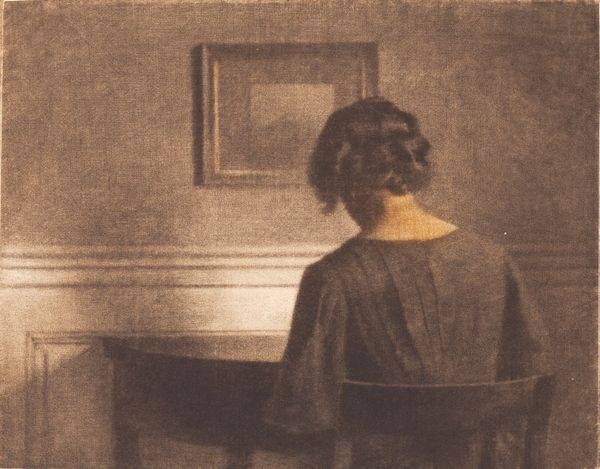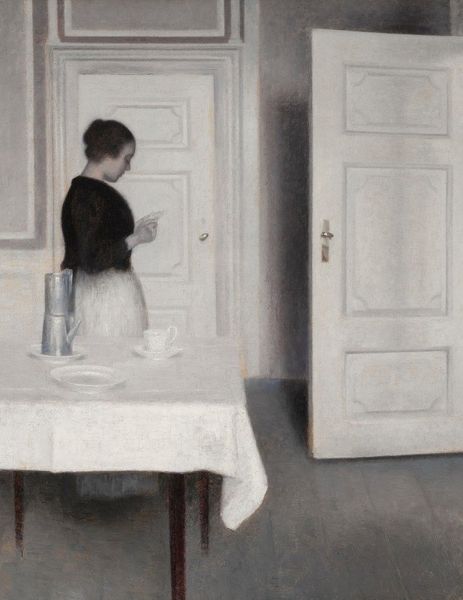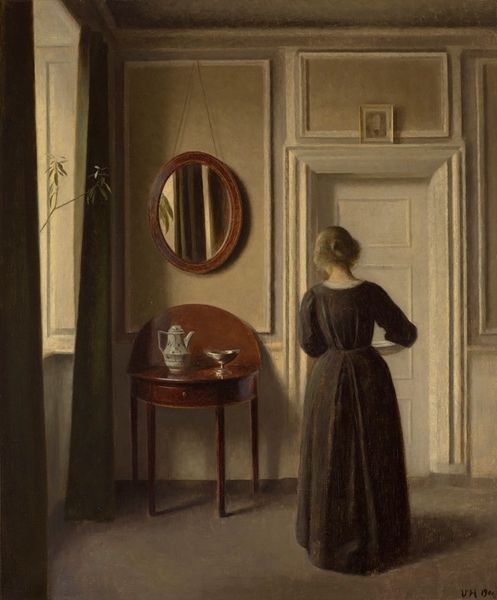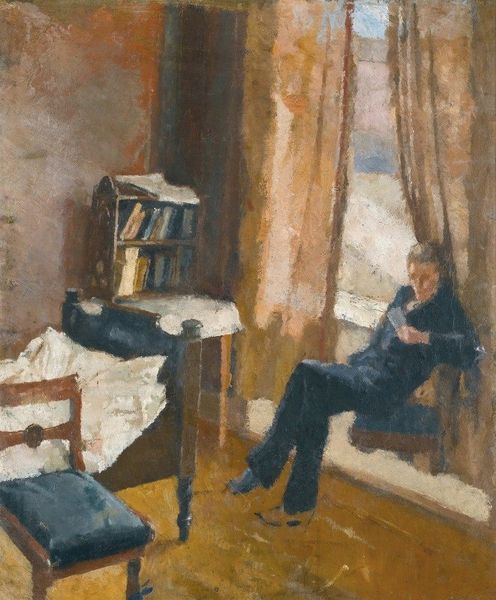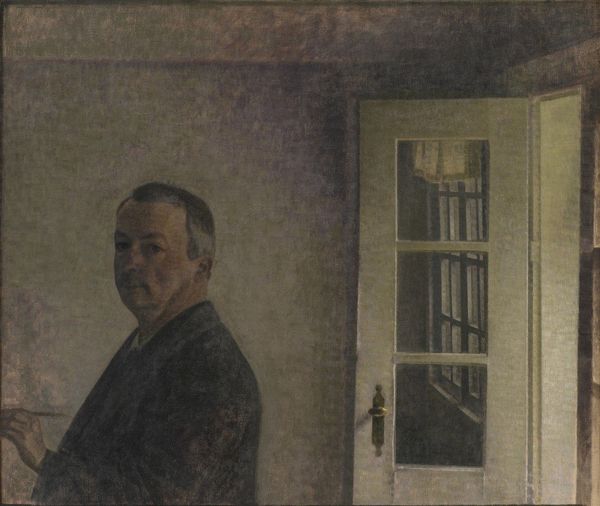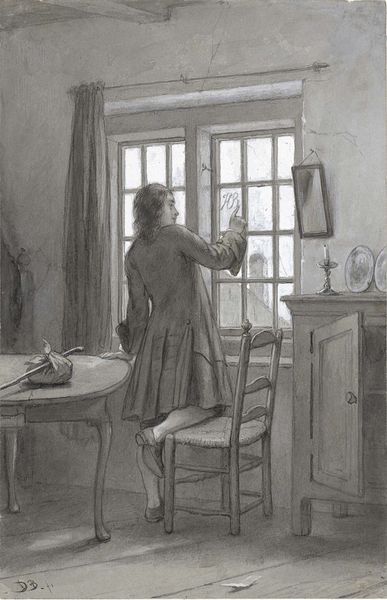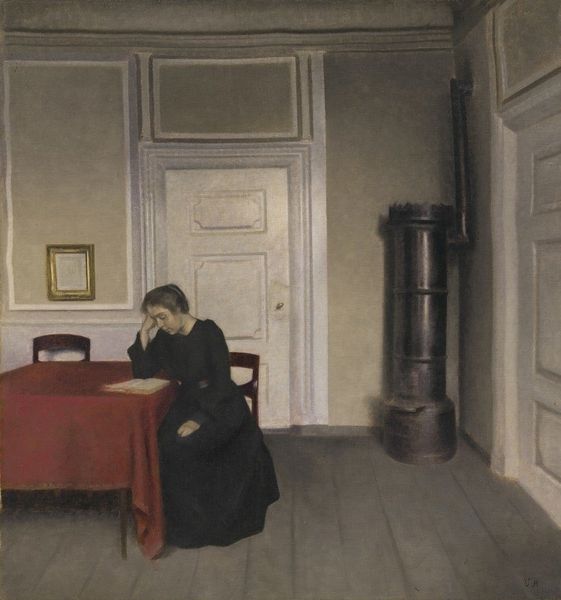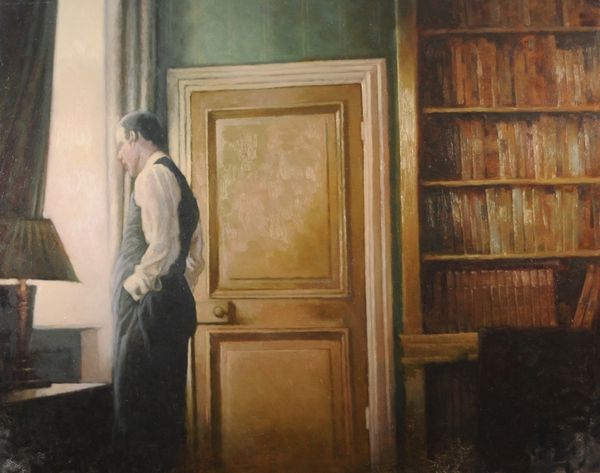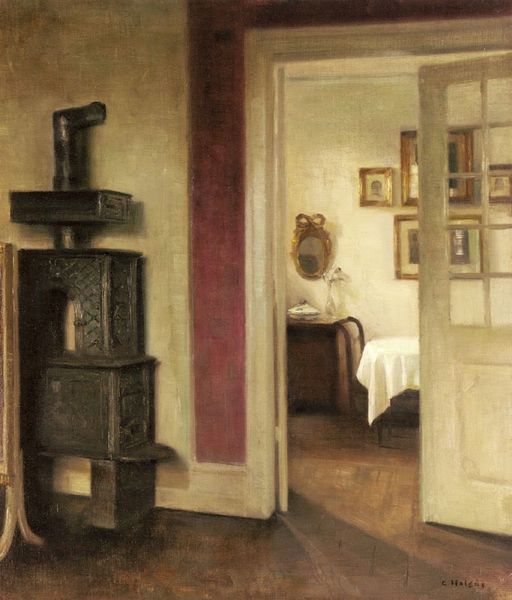
painting, oil-paint
#
painting
#
oil-paint
#
oil painting
#
aesthetic-movement
#
symbolism
#
genre-painting
#
sitting
#
portrait art
#
fine art portrait
#
realism
Copyright: Public domain
Editor: This is Vilhelm Hammershøi’s "Interior with a Reading Lady," painted in 1900. The palette is muted, almost monochromatic. What strikes me most is the pervasive feeling of solitude; the woman reading seems entirely self-contained. What can you tell me about this piece? Curator: The solitude you observe speaks volumes. Hammershøi often depicted women in interiors, highlighting their confinement within domestic spaces. Consider the social expectations placed on women at the turn of the century: their lives largely revolved around the home. Is she content in her quiet contemplation, or trapped within societal constraints? Editor: That’s a powerful reading. I hadn't considered it in that light. So the stillness isn’t just aesthetic; it reflects something about gender and society at the time? Curator: Precisely. Think about the doors: are they portals to freedom, or barriers? The woman’s engagement with the book becomes an act of quiet defiance or perhaps simply retreat. The painting invites us to consider how spaces shape our identities, especially gendered identities. How might she express herself, her intellectual desires, her creativity, within these boundaries? Editor: The book then represents not just a pastime, but possibly a form of escape, or even empowerment? Curator: Exactly! It allows her mind to travel beyond those walls, questioning those limits imposed on her. Also note how her form blends with the shadows and grey hues of the room. Is she present or fading away? How can we read these colours within this gendered lens? Editor: It's fascinating to see how the aesthetic choices support these readings. I’ll definitely look at Hammershøi’s work differently now. Thanks! Curator: It’s crucial to remember that art is never made in a vacuum. Understanding the context – the social, political, and personal elements – unlocks deeper meanings and enriches our experience of the work.
Comments
No comments
Be the first to comment and join the conversation on the ultimate creative platform.
